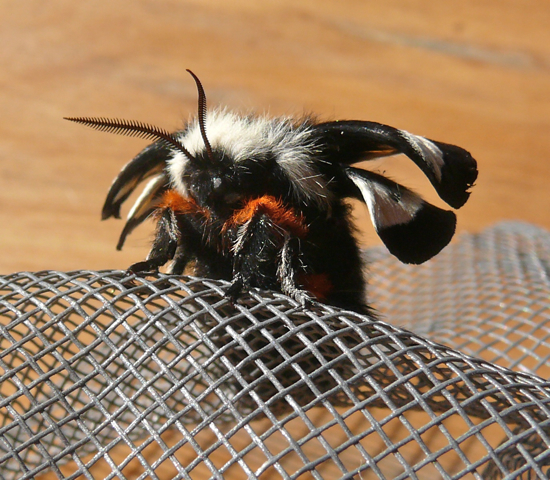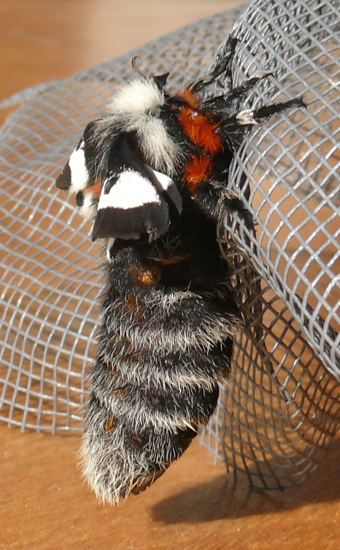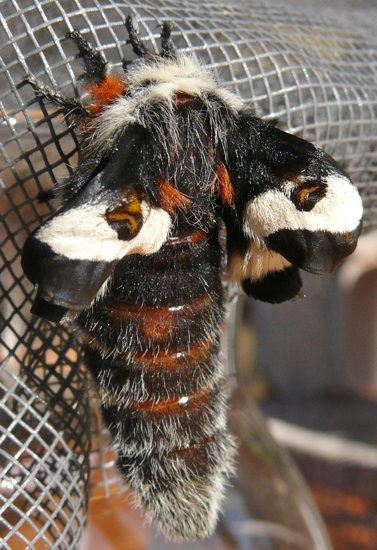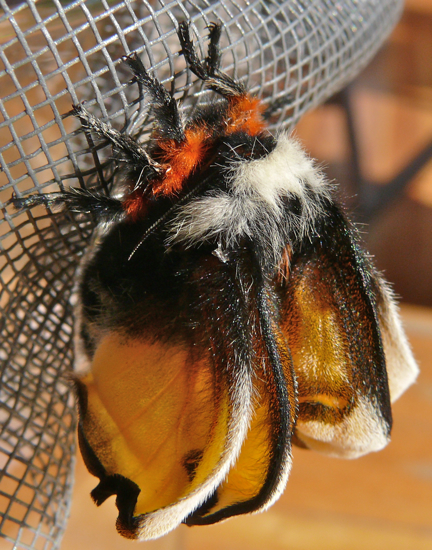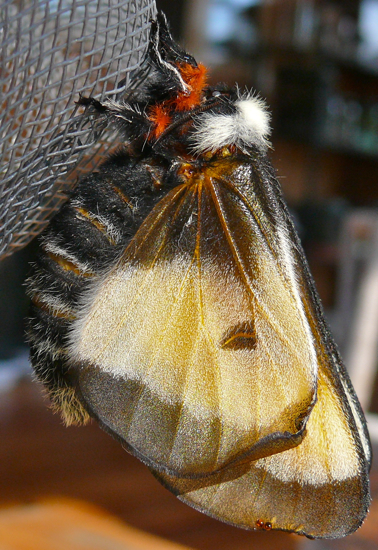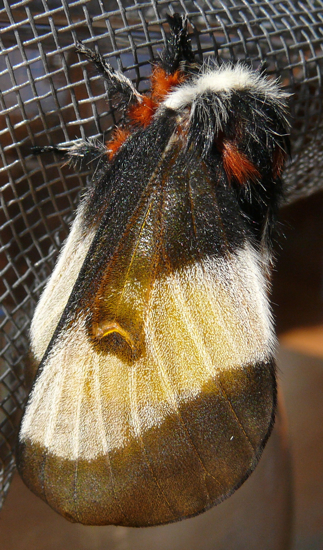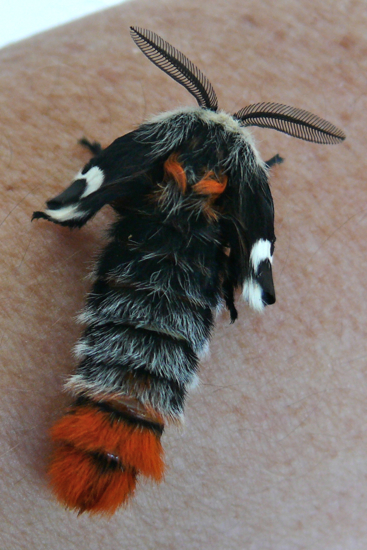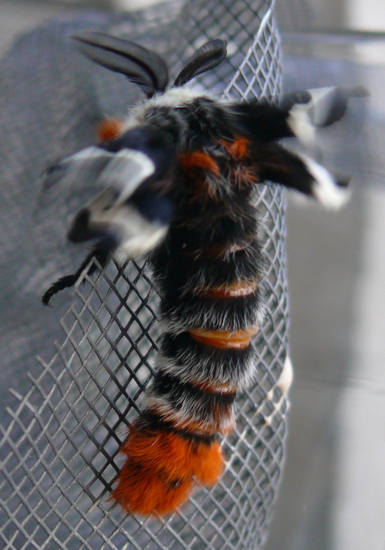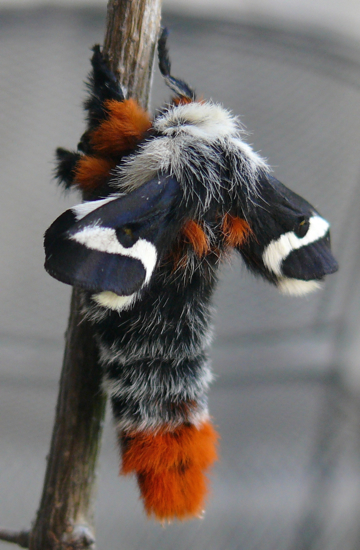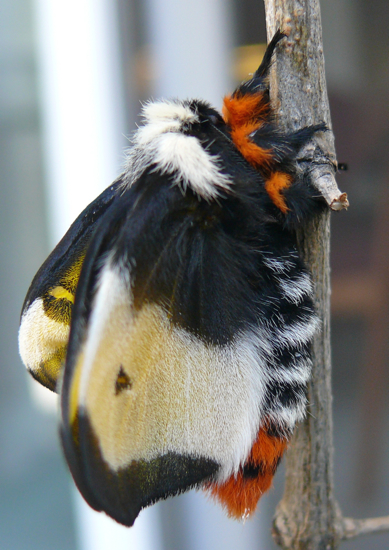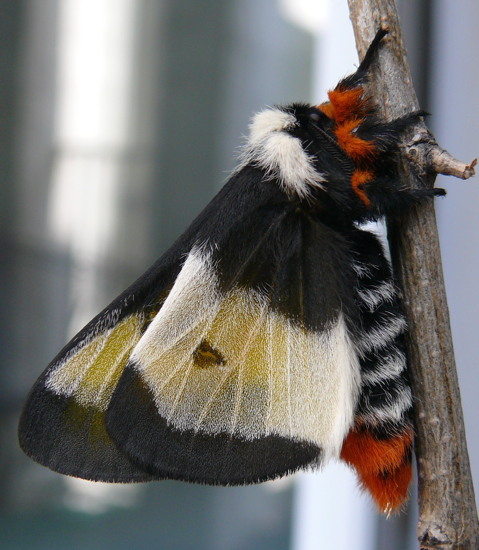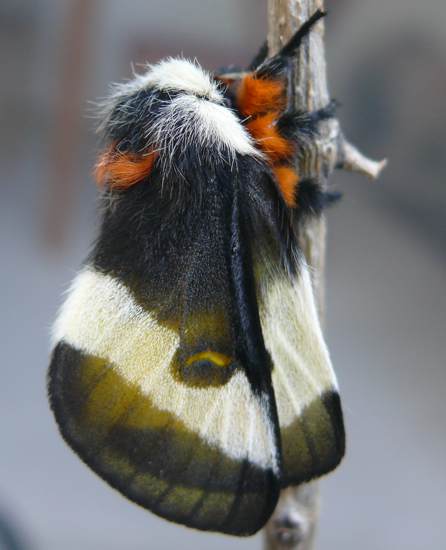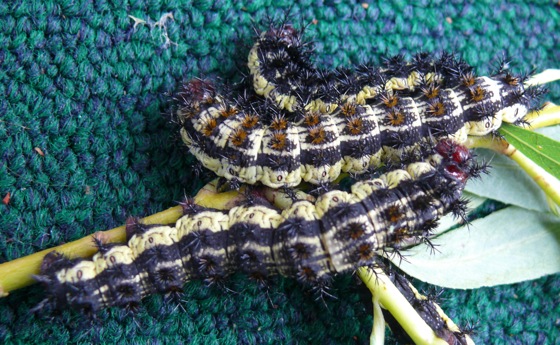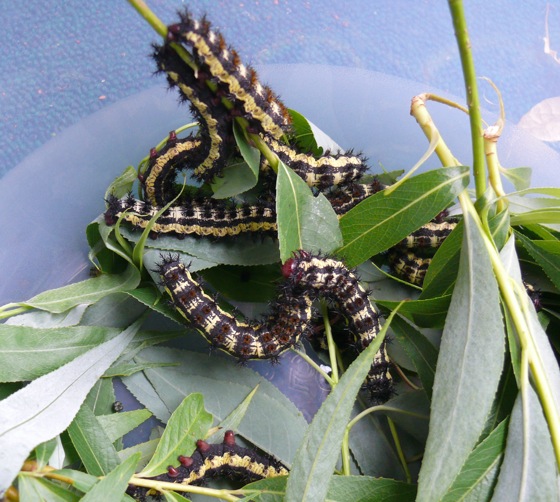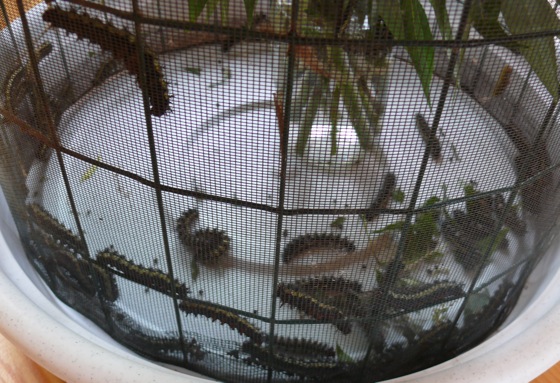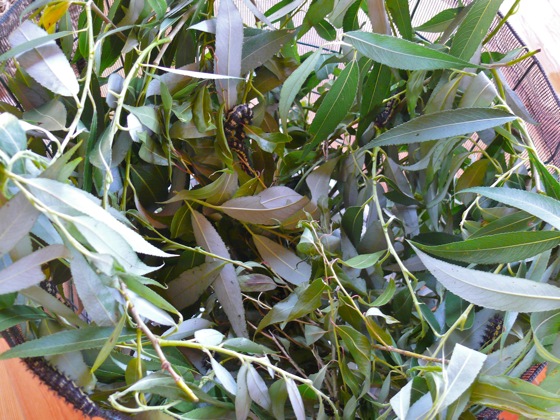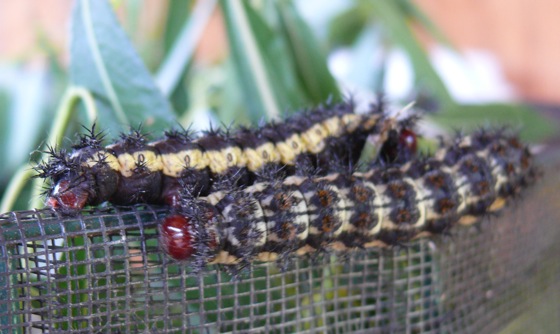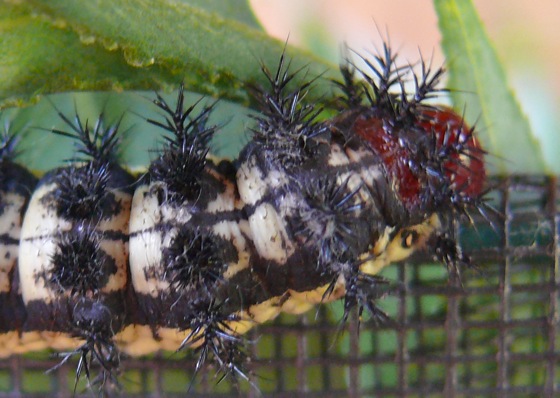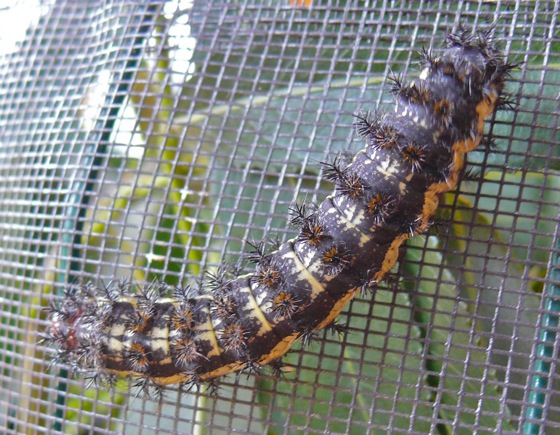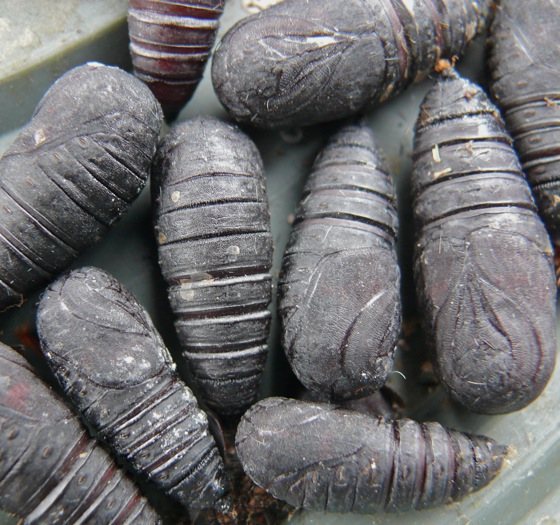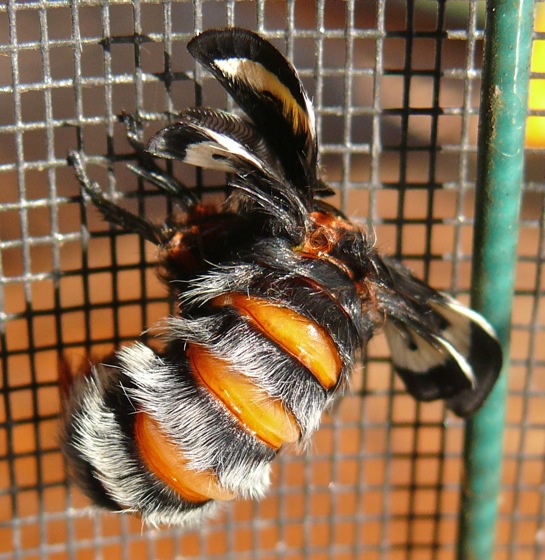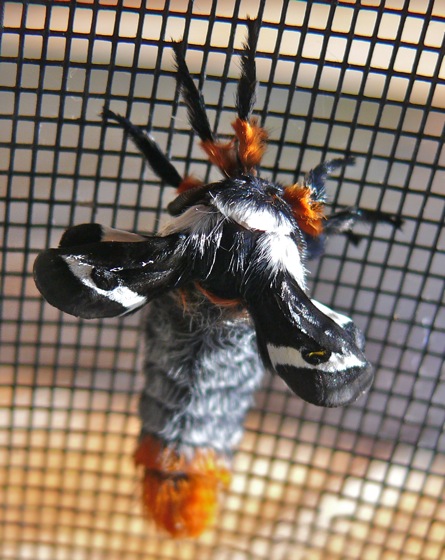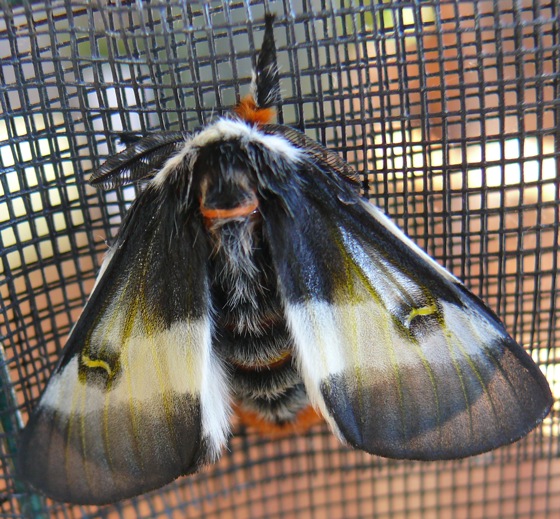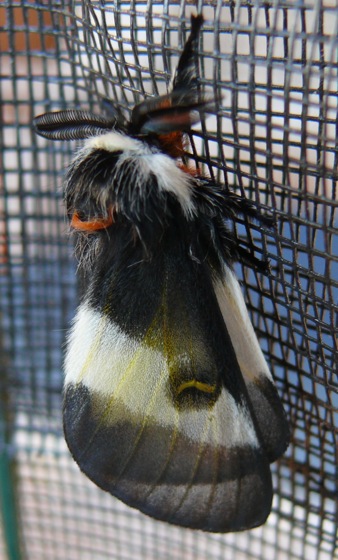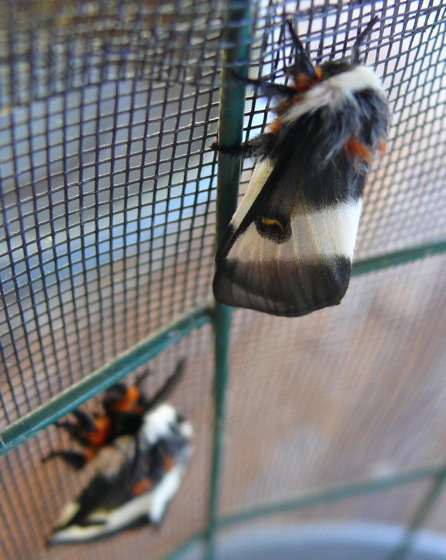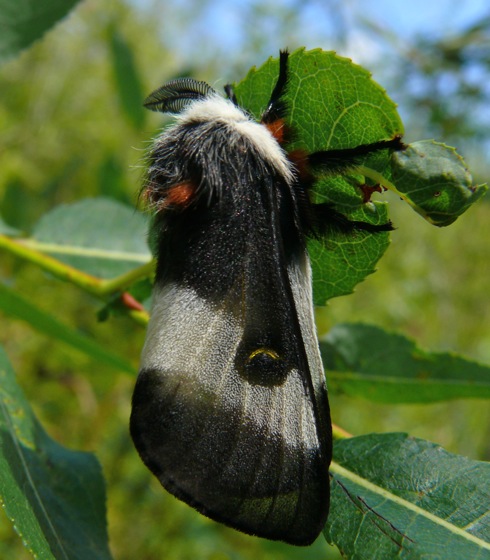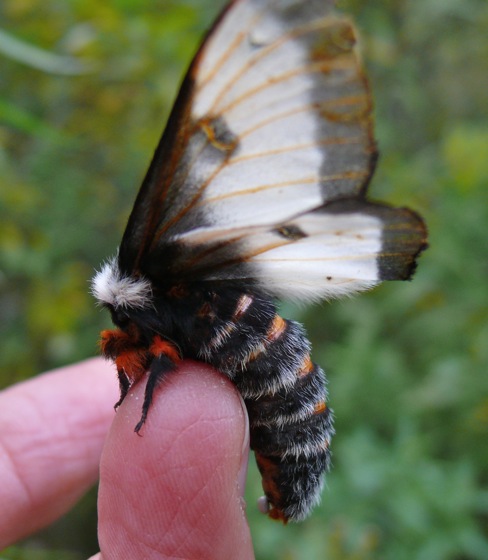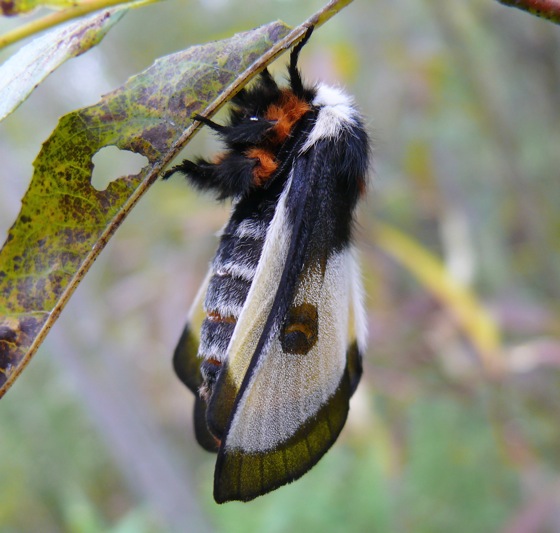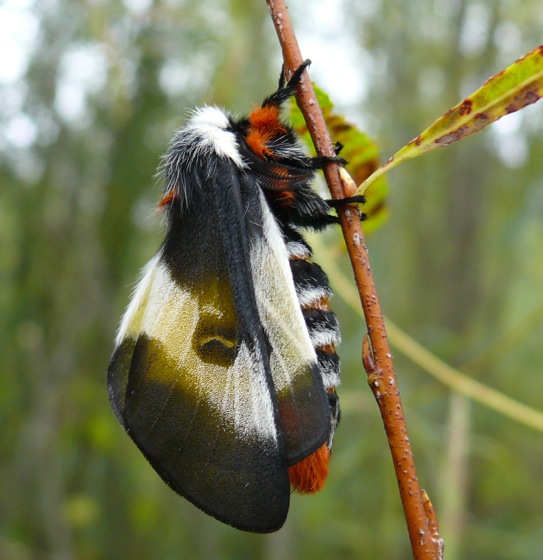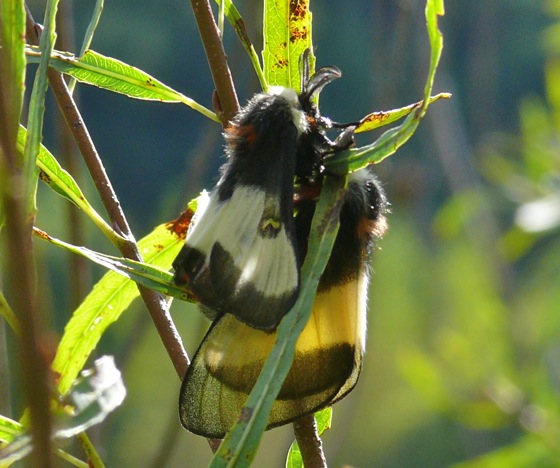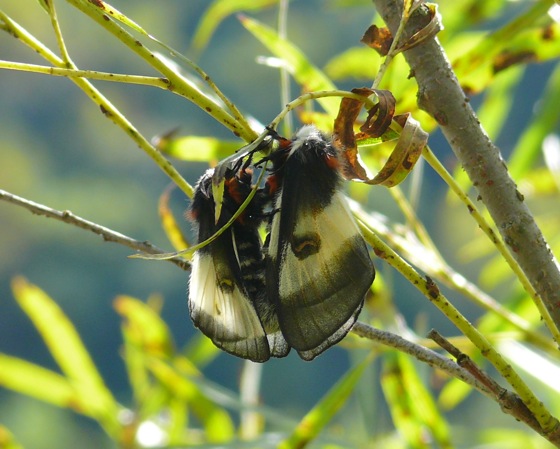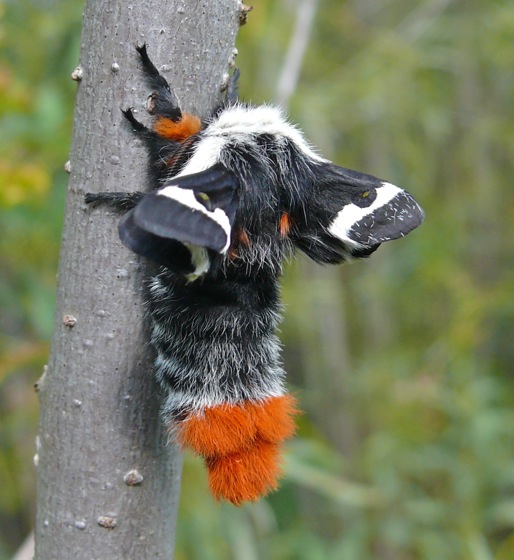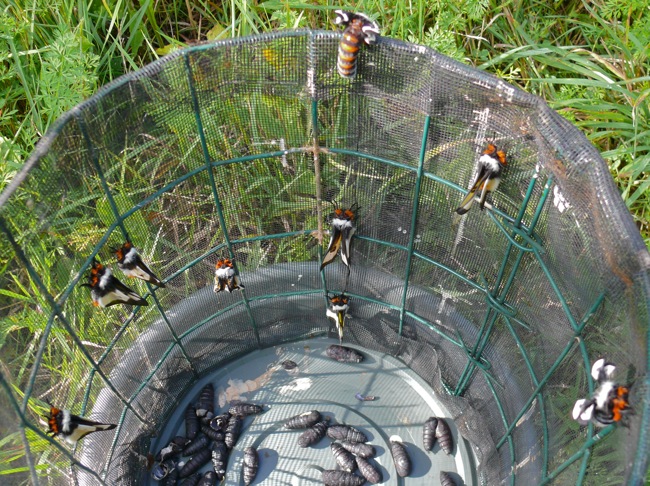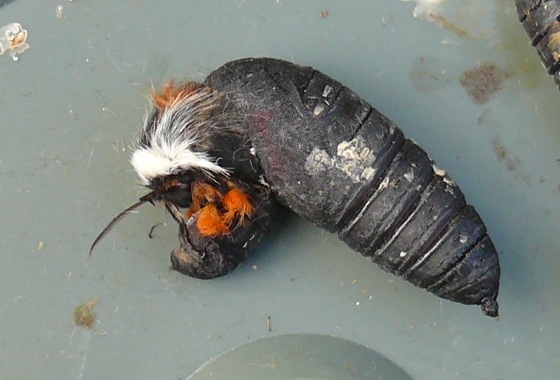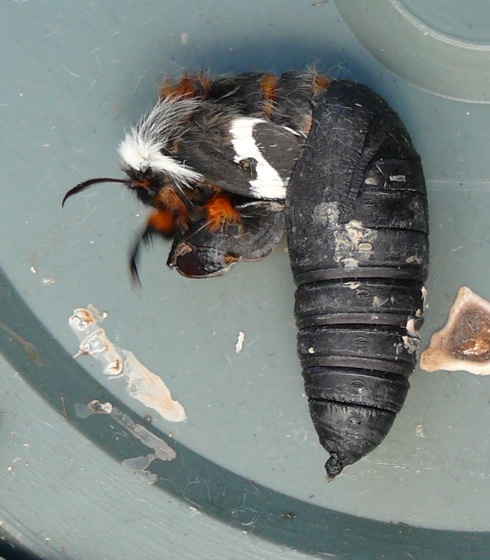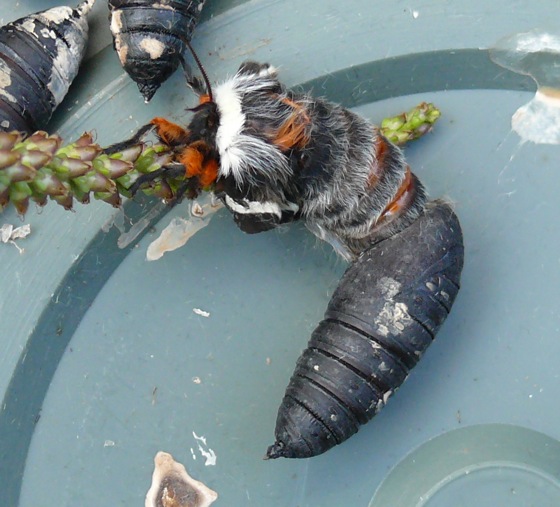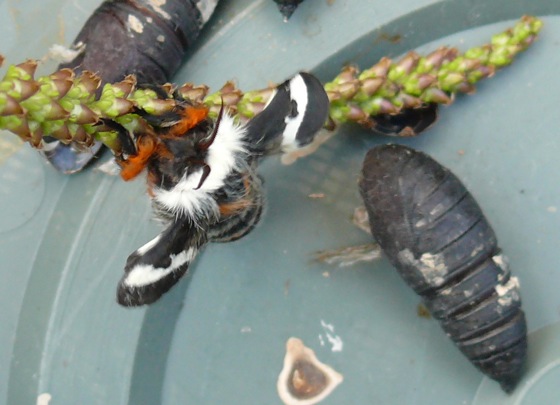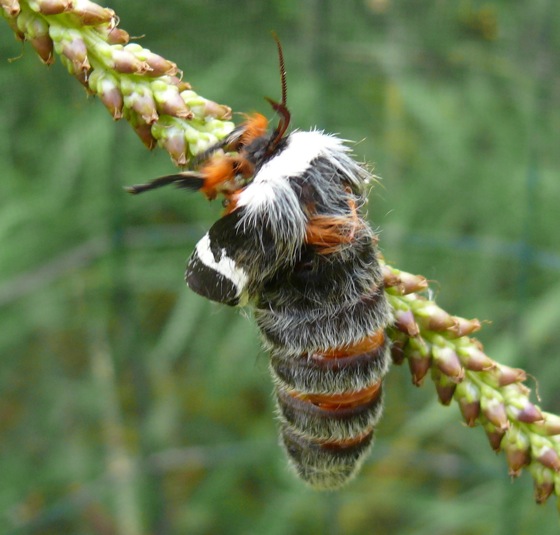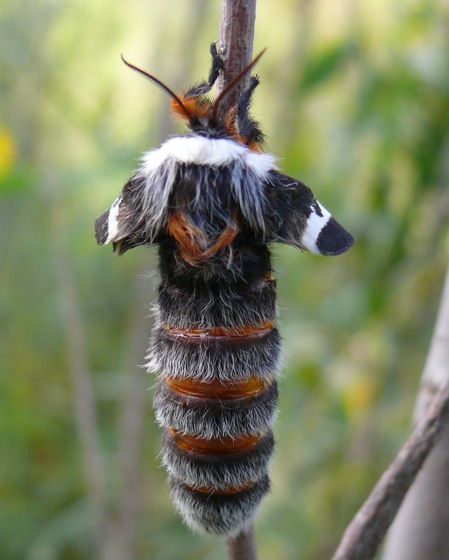This is cheating a bit on moths found at the farm. I got these moths from about 100 miles away in Minnesota, and I’ve released about 80 of them here. I hope they’ll form a small population that will continue to survive. I thought hard about whether to release them, but decided to do it. They don’t harm anyone; they’re native to this area, although I’ve never seen them here; they eat willow, which is plentiful here. This is a farming/hunting area, not a pristine natural area, so many non-native plants and animals have been released here over the last 200 years. And I’m recording my introduction here, so if anyone wants to know – I did introduce them to this land.
Caterpillar food: willow and alder (Bugguide)
My friend Emily Tenczar found several dozen Hemileuca caterpillars on June 20, 2009, on some shrubby willows. They were at Bush Lake Park, in Bloomington, Minnesota (Hennepin County). The willows are probably Salix exigua – Sandbar Willows (thanks to John Pearson for the ID).
Nevada Buck Moths on willow branches
Emily fed them willow leaves. She gave me six of the caterpillars, which pupated immediately, in mid-July.
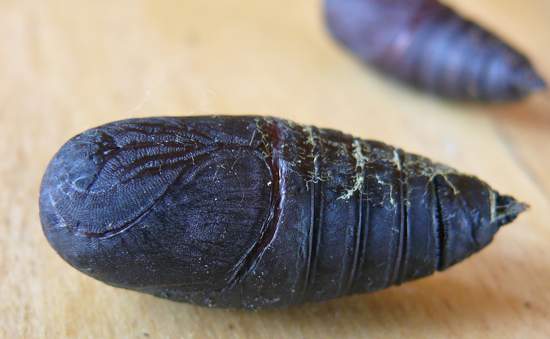
They began to emerge in mid-September. This is a newly emerged female, on 9/14/09
A series of the same female, showing her pumping up her wings.
When they first emerge, they spend a lot of time finding the perfect place to pump up their wings. Here’s some video of a newly emerged male, climbing around, trying to find a spot.
And here are some photos of a different male shortly after emerging. September 17, 2009 (Males have orange on the ends of their abdomens.)
We weren’t able to attract mates for any of the females, so after a few days of trying, we released them into a few different wild areas with willows, in hopes that they would find mates there.
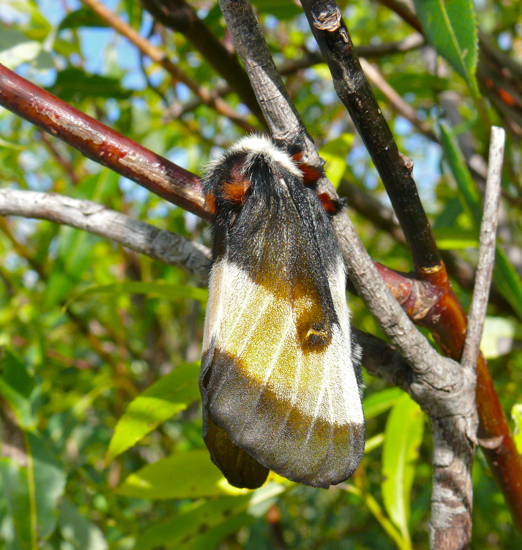
In July of 2011 Emily again found caterpillars at the same park in Hennepin County, Minnesota. She collected a lot, and gave me about 100.
6/23/11
6/23/22 They’re very lively caterpillars – moving constantly.
They have chemicals in their spines which sting if they come in contact with skin. Even when I was careful not to touch them, I felt mild stinging when I was cleaning their cage – similar to the sting from nettles. I think the chemicals must get onto the surfaces that they walk on. After I discovered that, I wore latex gloves when working with them.
One of my cages full of very active caterpillars
7/1/11 I fed them willow leaves.
7/1/11 When I opened the cage, they would crawl out immediately. I spent a lot of time pushing them back into their cage.
7/1/11
7/1/11
They all pupated in the first week of July. (This photo was actually taken much later – in September – just before the moths emerged.)
On September 12, they started to hatch. They all hatch between about 10am and 2pm – most between 10 and 12. They spend an hour or two pumping up their wings, and drying them out. They don’t seem to be interested in moving much for at least the first few hours.
The first one to emerge – a male.
9/12/11
9/12/11
9/12/11
The first 6 moths to hatch were all males. I put the cage in the refrigerator, because I was going to be gone for a few days, hoping it would slow them down. I took it out of the frig two days later, and none hatched for five more days.
The next hatch was 11 moths, and two were females. The next day there were 9 moths, one female. There are still 30 or 40 pupae left to hatch – it will be interesting to see if there are more females toward the end of the hatching.
9/19/11 Newly hatched moths
I’ve been releasing them in a large stand of willows on the edge of our wetland. I wait until their wings are fully expanded, and it’s the warmest part of the afternoon – usually about 2:30 or 3pm.
9/19/11 Newly released moth
9/21/11 Releasing a female
9/22/11 Released female
9/22/11 Released male
I walked out to release some of the new hatched moths on 9/23/11, and watched a male moth – from one of the previous day’s releases – flying around in the afternoon sun. He didn’t approach any of the females while I was there.
Here’s a description by Earle Baldwin of a flight of Buck Moths (probably H. maia) he saw in Massachusetts on 9/22/11:
“Today in Templeton Massachusetts I had a mid day Buckmoth flight. It’s frenzied flight is magic. A wet meadow unmowed in a hayed field often is their spot.. Normally I see these close to dusk. The fire red markings make it look like glowing fanned ember trailing insanity.”
On 9/24/11 I released two females and two males at about 2:30pm. I walked back to look at them about 20 minutes later, and there were 3 males flying around, and the two females were mated.
9/24/11 One pair
9/24/11 Another pair
9/24/11 A released male pumping up his wings. This one hatched on my way out to the wetland, so I put him on a willow branch to pump up.
9/25/2011 was a warm sunny day, and the moths started hatching at about 8:30am. 14 moths had hatched by about 11:30.
9/25/2011 I watched one moth emerge from her pupa casing. From first poking her head out, to climbing up a flower stalk took about 3 minutes.
She seemed to be looking for something to climb up on, so I stuck in a stalk of Common Plantain, and she climbed right on.
I transferred her to a willow branch, so she could work on expanding her wings.
9/22/11 Hemileuca eggs I found on a willow branch – the start of a new generation
I’ve never seen any evidence that these moths made it past 2011. I’ve watched for eggs and adults, and have never seen one in the area where I released them.
Aaron Brees has a Flickr page of wild Nevada Buck Moth photos taken in Iowa, along with some interesting information about taxonomy issues.

